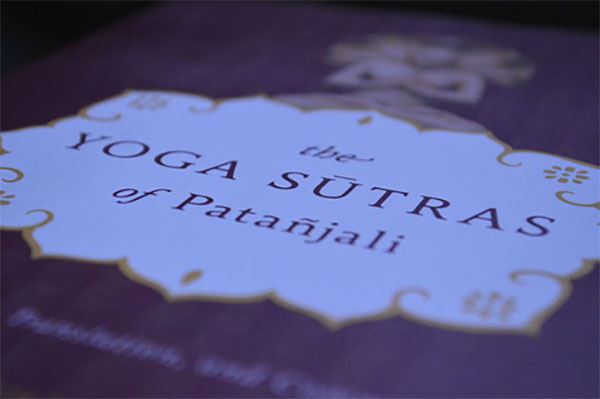Introduction to the Yoga Sutras (Part 1)
Most students of yoga have heard of Patanjali, but if they haven’t, then it’s only a matter of time before they do. Patanjali was an Indian sage who distilled the essence of India’s spiritual/philosophical traditions, which included centuries of philosophies and practices, and condensed this knowledge into 196 “Yoga Sutras”.
With these concise sutras (aka “aphorisms”), Patanjali codified India’s six philosophical system:
Subsequently, Patanjali became known as the father of Classical Yoga or as it’s commonly referred to today, Ashtanga Yoga. In addition to Ashtanga Yoga, the Yoga Sutras are also sometimes referred to as Raja Yoga, or the Royal Yoga.
While Patanjali’s Yoga Sutras are generally thought to be as old as 400 BCE, archaeological evidence suggests an earlier date. Other ancient texts indicate that the methods described in the Yoga Sutras may have been practiced as early as 3000 BCE. Oral tradition asserts that the period may be even earlier than that.
The word ‘sutras’ is derived from the word ‘suture’, which conveys that the sentences are short, compact and stitched together. Every sutra contains a deep meaning and can stand on its own as well as be taken in context with the rest. A good analogy often used to describe the yoga sutras is a pearl necklace. where each pearl (or sutra) is complete but takes its full expression when strung together with the others, like a necklace.
The condensed form of the Yoga Sutras has yet another purpose. They can be easily memorized, and that’s exactly what has happened. They’ve been memorized and chanted in Indian ashrams for well over 2000 years and that continues today.
When studied from the most basic level, Patanjali’s Yoga Sutras will give us insights into the human mind. Including how it works and how it affects the way we perceive our circumstances, our experiences and how we feel about them.
Patanjali felt the problem was our perception of the world and how that perception is limited to our senses and our thoughts about them. So, he suggests that in order for us to experience the enlightenment we seek and establish the freedom and liberation we desire. To accomplish that we need to dedicate some time to taking our attention away from the outside world we live in and turn within. Most of us already know this to a certain degree. We realize that when our lives get too hectic, we can get overwhelmed and our spiritual maturity is sacrificed as a result.
On a much deeper level, what Patanjali is suggesting we turn our focus from the external world back to our inner selves. Then the path itself will slowly draw us toward the goal, increasingly unveiling the “Light of the Soul.”
Even though yoga students come from an assortment of backgrounds it is still important for them to know that yoga is universal. Regardless of anyone’s religious orientation or whether they are a ‘believer’ or not, their practice will reflect precisely what they need at any given time. If they are inclined toward the Divine (God, the Absolute or whatever name they choose), practicing yoga will make them feel more in tune with the sanctity of life.
On the other hand, if they don’t relate to any religious concepts. Then their yoga practice is likely to give them more strength and stamina to achieve what they want in life. And in all probability, they’ll slowly develop a sense of awe and an “attitude of gratitude” toward all of life.
~Rae Indigo
